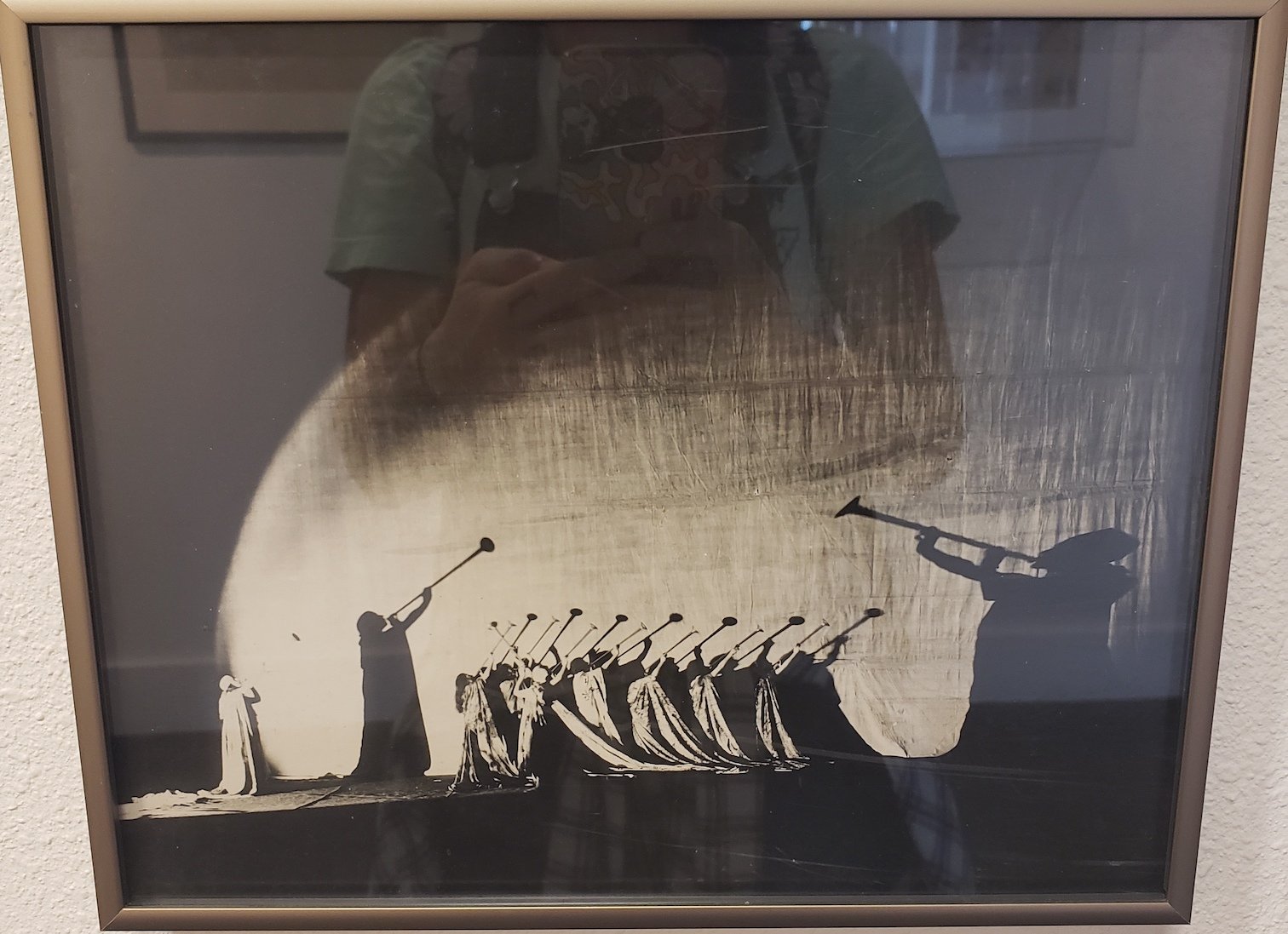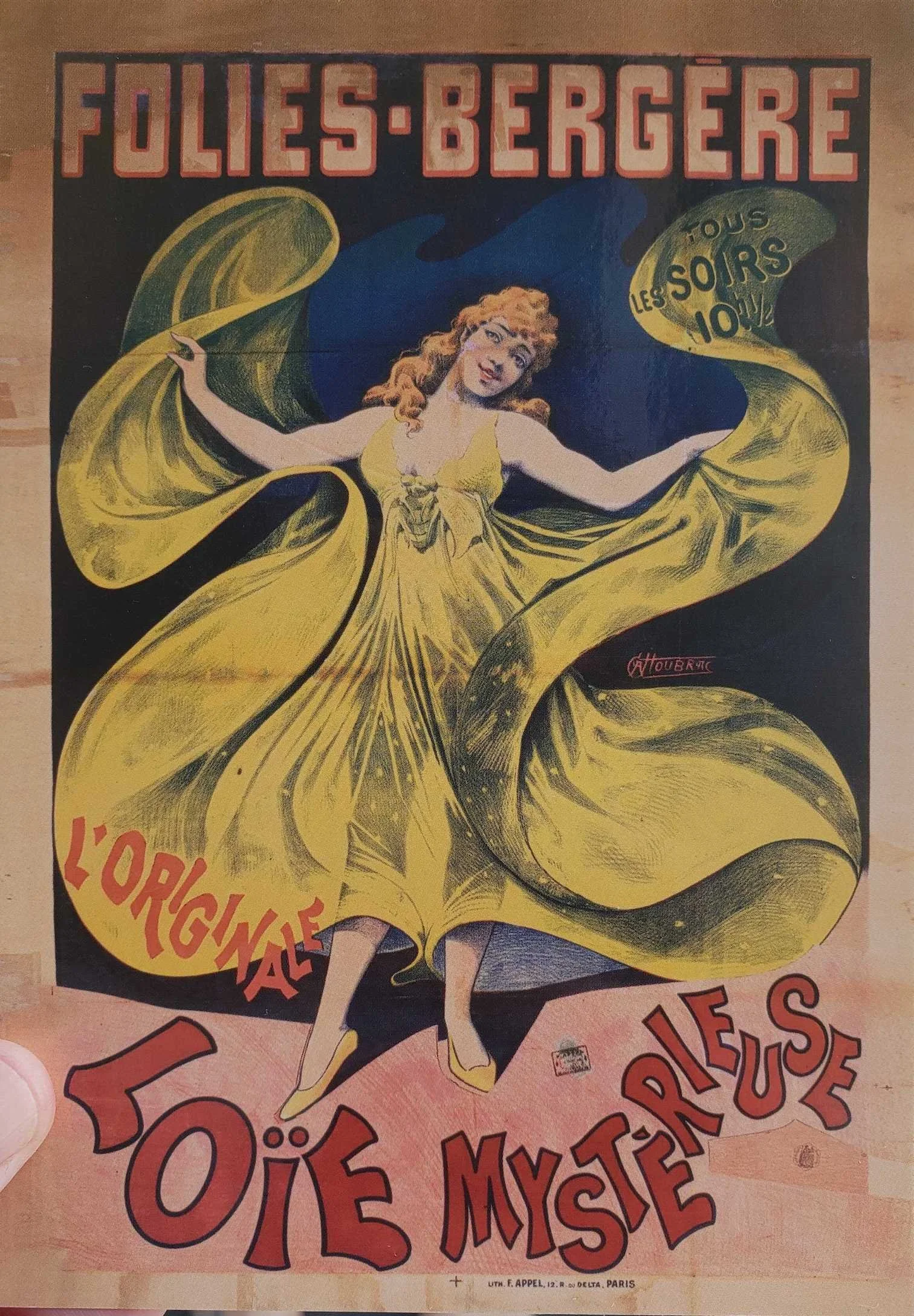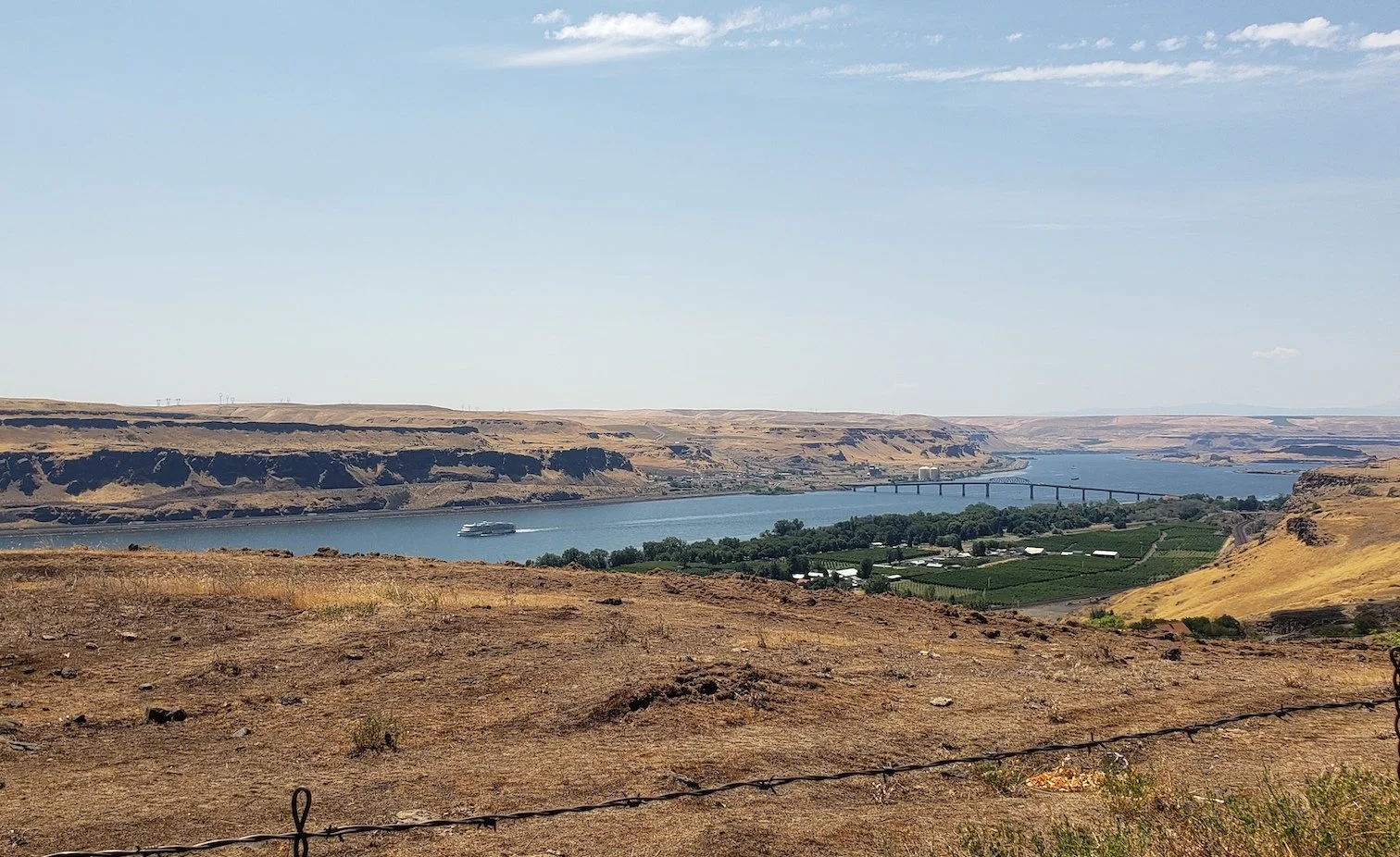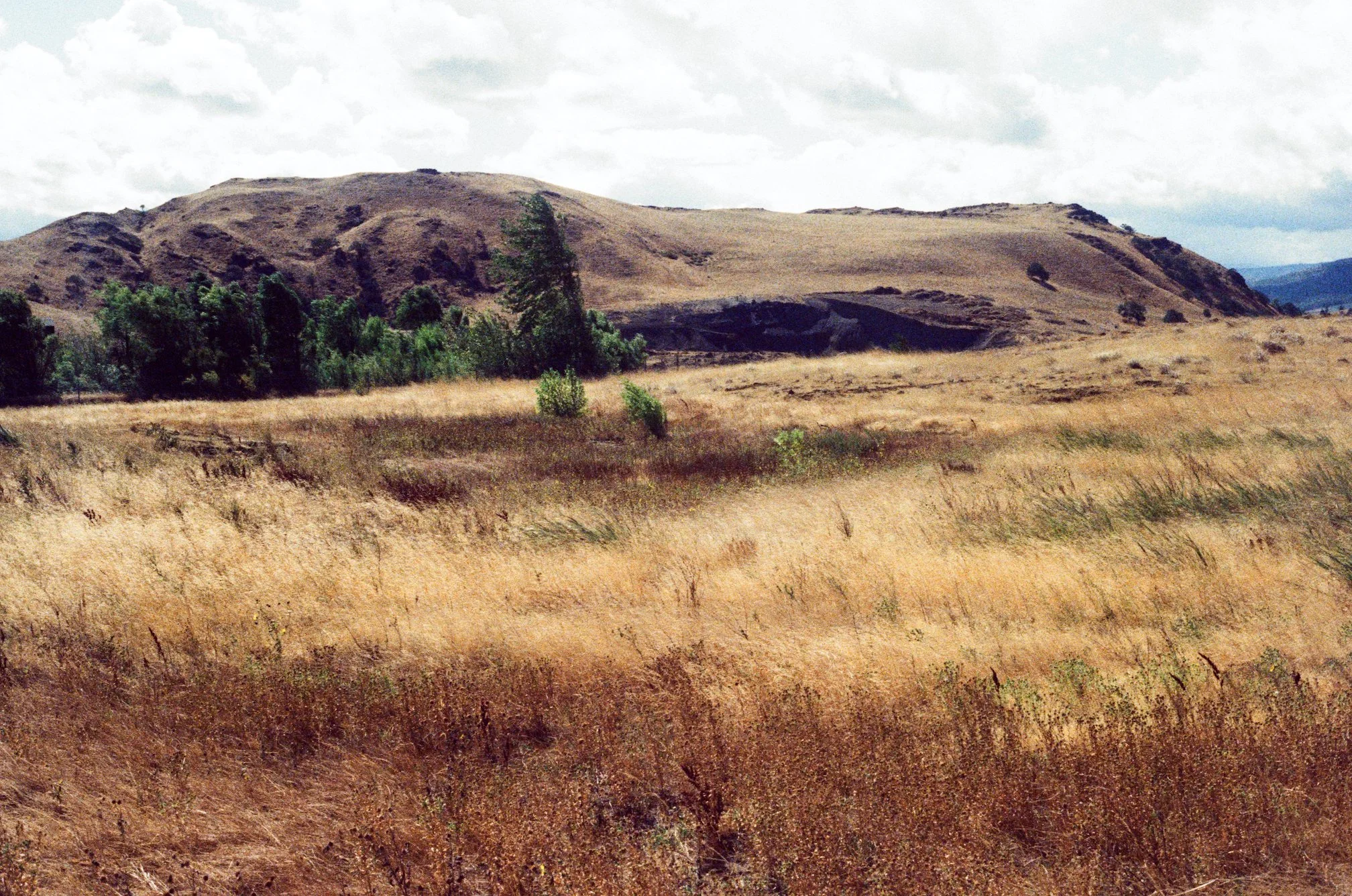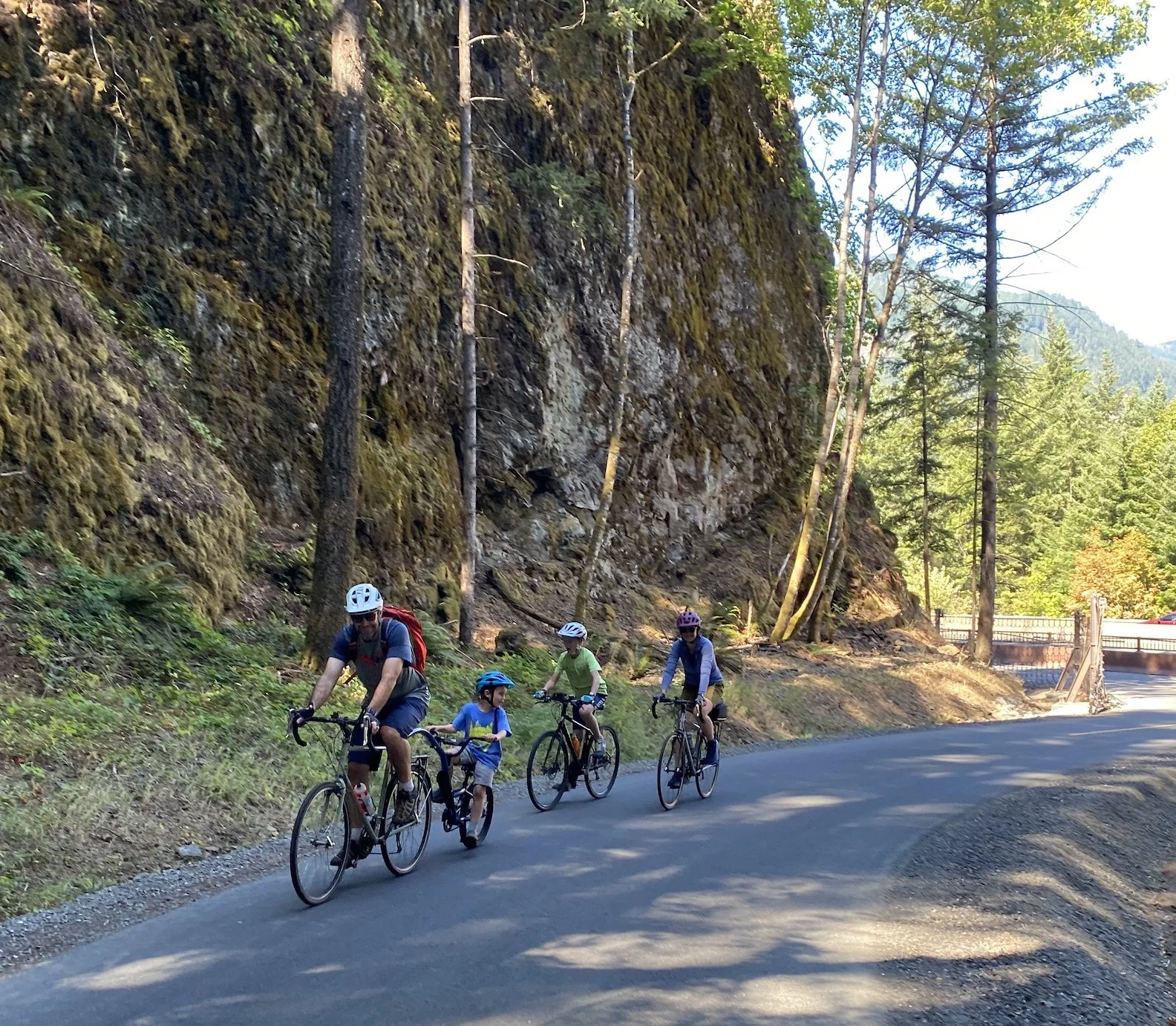A view from the bus window: Tourism & Belonging on the American Empress Tour
By Sarah Cook
Here’s something I find astonishing about The Dalles: A few weeks ago, I learned that the number of cruise ships that dock in this town annually surpasses those of any other river in this country, including the mighty Mississippi.
And during that same week, I also learned that the downtown traffic lights, which for decades now have been set to blink yellow all day on Sundays, may give up their sleepy setting in exchange for standard weekday functioning, due to a proposal being considered by the Traffic Safety Commission here in town.
The Dalles: We’re hopping—but slowly, with ease. Can both be true? About a place? And about a community?
According to the Chamber of Commerce, more than 18,000 people are due to visit The Dalles this year by cruise ship, which is a fun number to think about alongside our 16,000-ish total population. I’m thinking about it because I was invited to be a tourist in my own town by joining one of the premier bus tours via the American Empress cruise ship, part of American Queen Voyages. The invitation came from Cody Yeager, the tour guide and history-slash-ghost advocate whom I celebrated in my last article for this column. We were joined that day by Coach Captain Eric McMahon, and I was given an extra warm welcome by the American Empress Shore Excursions Manager, Kenzie Collins.
Shore Excursions Manager Kenzie Collins smiles in front of the American Queen Voyages tour bus
“I love getting to show our guests The Dalles,” Kenzie shared with me. “There is so much history here, and the town is very passionate about sharing that history. Many guests are shocked when we pull in as The Dalles is a part of the high mountain desert and is not stereotypical for the PNW. But getting to see world class art, taste local wines, and explore an old west town is definitely a highlight for many guests. Often I get comments that more time was needed in The Dalles since there was so much to do and see.”
The American Empress
It’s a wild, eye-opening contradiction: The Dalles as sleepy, dawdling town, where thousands of people wish they could spend more time hustling about each year. What are they so excited about?
For one, there’s the cherries. Views of the luscious orchards are plentiful as we’re driving from one end of town to the other, but did you know that we’re the sole supplier of the delectable fruit for Ben & Jerry’s? (Looking at you, Cherry Garcia.) Revenue from our cherry industry can reach $80 million in a single year—in 2020, that number skyrocketed to $134 million, before dropping by about half the following year. (And no, such wild fluctuations aren't merely the result of the pandemic but are, first and foremost, first and foremost, due to climate change.)
Spotted a friend during our travels
Then there’s Google. Arriving at the westernmost edge of town, Cody highlighted some of the company's top contributions to The Dalles, like how they’ve equipped all school buses with wifi. That might sound like mere accessory, but when we’re talking about the rural areas within and near the Gorge where many K-12 children live, we’re also talking about long bus rides to and from school each day; wifi on the bus can mean getting your homework done in time for dinner.
I’ve always found Google's gray facilities a bit of an eyesore along our otherwise idyllic riverfront trail—why don’t they paint a mural on it! one ingenious attendee suggested—but it’s hard to care about appearance when I'm learning about their partnership with the local middle schools, and the robotics programs that might not exist without their funding. I guess some things are more than what they initially seem.
A glimpse of Coach Captain Eric’s beloved magnet collection
Then, there’s the fish bridge. Gracing both sides of River Road just off Exit 82, the metalwork display includes sturgeon, steelhead, and salmon, all of which were made by inmates at the Oregon State Prison in Salem. Cody went on to explain that inmates in all 14 of our state correctional institutions are required to work and/or go to school 40 hours a week, and are assisted with job placements upon release. I wasn’t surprised to learn that, as of November 2022, Oregon’s recidivism rates have reached an all-time low.
I guess some things are more than what they…well, you see the pattern. I have strong feelings about capitalism and the criminal justice system, but I’m also a believer in context, and I try my hardest to move through life understanding that I usually don’t have all of it. As a result of the tour, I came away with a deeper, more nuanced understanding of my community and what keeps it functioning.
A view from the bus window
Throughout the entire first half of the day, cruise ship travelers entered and exited the bus all over town, taking advantage of the various “hop along” points: downtown near Klindt’s and The Workshop, or up at Fort Dalles, or over at the Discovery Center, etc. Before hopping off, they’d snag a free water bottle and ask Cody to point them in the direction of the boat (usually, “thataway”). People would sometimes ask what mountains they were seeing, and when the answer was, “Mt. Hood,” Cody explained the vital difference between dormancy and extinction.
Let’s invite a metaphor, shall we? Since moving here right after grad school, I confess that there have been times where I’ve felt my affection for The Dalles inching toward extinction. But I see now that in those moments, it was only dormant! How often are we moving through our days misreading absence as nonexistence?
A pitstop at the gloriously odd Stonehenge replica in Washington
Leftover knitted flowers from a previous art project, facilitated in honor of the World War I memorial that the Maryhill Stonehenge is a part of.
During the second half of the day, the hop-alongs subside in lieu of the afternoon “premium” tour. We settled in and drove east, Cody’s thorough anecdotes entertaining us around each corner and before every bluff. The goal for this part of the tour is simple: about an hour and a half of free time to explore the Maryhill Museum of Art, and a final stop at Jacob Williams Winery, including a free wine tasting for all.
My favorite thing from Maryhill? The stunning Loïe Fuller exhibit. Photo above and two below.
But first: Maryhill. On the way to the museum, we learned about Sam Hill, the eccentric entrepreneur with “manic tendencies,” who married Mary and built the museum, originally intended to be their living quarters. Besides some of his wackier ideas—creating experimental loop roads, trying to build a town in a nearby area of Washington that had zero water access—he is also the person responsible for the historic Columbia River Highway. A postcard I bought for my partner from the museum gift shop shows a black and white photograph of the Blaine Juvenile Band, a group of about 45 mostly unsmiling young people, gathered for a ceremony in honor of the “Blaine Peace Arch,” built by Sam as a symbolic representation of the good relations between Canada and the U.S.
A fountain built by Sam Hill. The vision? It would shoot water 150 feet into the air, wowing visitors upon arrival to this neck of the woods. There was just one catch…
Why’d I choose this postcard? Not for the arch, which is mostly a fuzzy shape in the distant background, but for the banner hanging above the crew: “God Bless Samuel Hill: Builder of Peace. Wizard of Roads. Friend of East and West.” I was completely charmed.
My own souvenir.
After filling up on art and history, we made our way to Jacob Williams. “We've collaborated with the American Empress for 7 years,” said Regina Durrant, General Manager at the winery. “Tour group sizes change weekly, but no matter how big or how small the tour, we provide a friendly and memorable experience for all.” Besides serving American Empress tour guests, the winery sees “a nice mix of local and tourist traffic,” with many guests taking advantage of their wine club, which includes complimentary glasses of wine with every visit.
At first, I stood awkwardly in a corner near the bathroom while folks settled in for their initial tasting. I had recently hit 11 months of sobriety, and I didn’t want to interfere with Regina and the other professionals as they buzzed around keeping everyone’s souls and glasses full. But then a kind woman made assertive eye contact with me and, through a warm smile, beckoned me over to her table. I spent the rest of my time drinking water and speaking with Jane and her husband, Bill, who were visiting from Florida, along with Caroli and Bill, who hailed from Indiana.
The four of them shared tales of the various extravagant cruises they’ve found themselves on, and the international travel that is a fulfilling part of their post-retirement lives. They helped me understand that the maximum capacity of the American Empress—217 guests in total—is actually a small number, and they asked me eager questions about my own experience of living in this unique part of the west.
It was the perfect opportunity for asking the question I was dying to ask: What do you think of this place, I mean really?
Another cruise ship passing by in the distance
OK, I didn’t say it like that, but my enthusiasm and curiosity were very real: Here were four seasoned travelers, talking about visiting Italy and France, or taking an extended cruise clockwise around the United Kingdom in order to see London, Wales, Dublin, and The Isle of Man all in one go. What was it like to be spending time in this strange, high desert-y place compared to all that, this place that is so not what you picture when you picture going on vacation? What makes this place, in their eyes, worth the visit?
Blanket hills, windmills dotting the horizon…and a garage that was intended to house Sam Hill’s car collection. I understand the cows have made good use of it.
These are the moments where I wish I were a real journalist with a tape recorder. I proceeded to listen to these delightful and honest folks, one after the other, articulate their own version of the same answer: It’s the landscape. How to put into language the uniquely alluring color palette of this place, with its sagebrush textures and warm hues? It was a joy to hear them struggle to compare The Dalles to any other environment they’ve seen.
The Mt. Ulka area above and two photos below where locals can look forward to our newest hiking trail. Photos by Mo Burford.
So how do we describe this place, Les Grandes Dalles de la Columbia? From the bus, I saw Ponderosa pines leaning eastward while cradling eagles’ nests in their tops. I saw suede hills, and a muted festivity of colors that no Instagram filter could compare to—burnt yellows, mint greens, pale browns, foggy blues. I saw clusters of Cottonwoods breaking the wind for the sensitive cherry trees they hug. I saw the well known Eagle Caves, and the less discussed, more mysterious Hermit’s Cave, perched at the end of Hermit’s Way. And I saw Mt. Ulka, where a new hiking trail will soon connect the Gorge Discovery Center directly with those hills to the southwest.
In short, I saw the length of the largest national scenic area in the entire United States, which means I’m not exaggerating when I claim that those of us who make our homes here get to reside in a living postcard.
Sitting in on a guided tour about the place you’ve called home for the past 9 years, one that’s geared toward folks who don’t live here, is a surprising, odd, and joyful experience. Do we really not get more than 7 or 8 inches of snow? Then where did all these memory-feelings of long winters that won’t quit come from? 300 days of full sunshine every year? But the inversions! Oh gawd, the inversions.
But these contradictions are the natural result of making one’s life in a discrete place. They’re the emotional ties and felt experiences that we have inside of it, a result of our sustained presence and the ongoingness of certain feelings. The gift of my time with Cody, Eric, and the other attendees, whose marveling and gasping was as educational as the facts I absorbed, was the gift of re-accessing beginner’s mind, so to say, and of being reminded that, while tourists might be seeing a curated image of the places they visit, that curation also includes some of the best things a place has to offer.
I’ve known that The Dalles is a complicated and special town for years now. (I’ve even written about this, in a previous iteration of my big feelings, back in 2019 for Oregon Humanities Magazine.) But being in relationship with place is really no different than being in relationship with other people; the occasional divergence and surprise and huh? are part of the contract.
“Perhaps the most radical act we can commit is to stay home,” Terry Tempest Williams once said—this before the pandemic—describing the “politics of place [that] emerges” as a result of us being in direct, intentional relationship with where we live. Perhaps the second most radical act, then, is to pay our full real attention to the place we call home. The kind of attention that risks boredom as a result of its pace and dedication; the kind that’s willing to notice both the obvious and the obscure.
This perspective, of course, is hard to access, requiring a strategic bonk on the head or else something oddly formal—a guided tour of your own city, for example—in order to shake something loose and remind you about your surroundings. I'm grateful to Cody & crew for helping me get there the gentler way. Without leaving the country, or taking a vacation, or attending some swanky retreat, I was able to have a big, memorable experience, and to return home at the end of the day both rested and inspired.
I’m starting to think such experiences aren’t the result of expedition, but of intention. Today, my intention is to adore those blinking yellow lights—literally, metaphorically—whenever I can.
Support Local News
Available to Everyone; Funded by Readers.











